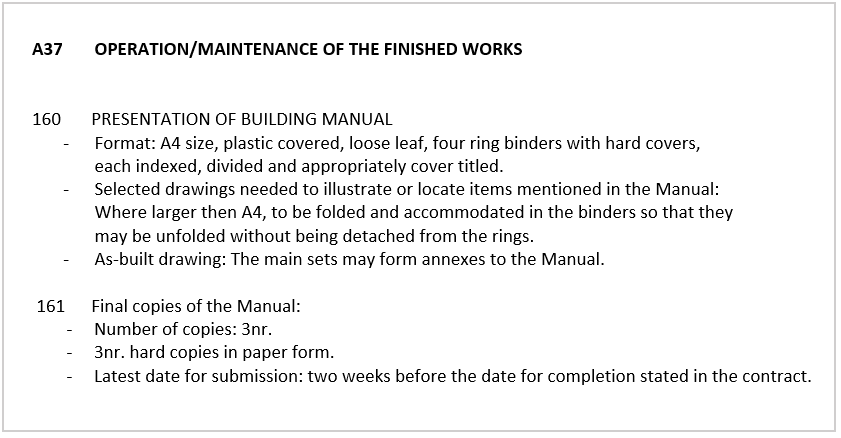How many operations and maintenance (O&M) hard copies do you need? The answer is none!
Today, there are much more effective methods of delivery for structured data and O&M requirements.
We understand multiple hard copies are often contractual, but this does not mean they shouldn’t be challenged. We have all seen the standard A37 specification within the Employers Information Requirements (EIRs), here’s a typical example:

However, in our experience, when a client is informed of the problems associated with paper copies and the direct cost savings available by reducing them, it is often possible to eliminate hard copies entirely.
“The days of archive boxes of paper at PC are long gone and we at Zutec are passionate about improving the standard of construction handover information by adopting the latest technology and process improvements.”
The problem with hard copies of O&M manuals
The simple truth is that once a hard copy is delivered to site, it is rarely looked at and provides limited benefit to the end user.
Common problems associated with hard copy O&Ms:
- Costly to produce
- Quick to become out of date
- Large storage requirements
- Susceptible to loss and damage
- Difficult to locate information
The benefits of paperless O&M manual alternatives
Delivering project data through the cloud has numerous benefits for the end user over traditional paper methods.
- Cost saving
- Simple to navigate
- Data secure and backed up
- Access from anywhere at any time
- Ability to integrate with client systems
Why not invest in hosting O&M manuals instead?
The cost savings from eliminating hard copies can be invested in services much more beneficial to end users such as hosting agreements, which provide:
- 24/7 access to real project data
- Updates for future fit-out and alterations
- On-going training and support for all end users
Enhanced asset register & PPM schedule
Often, when a building manager takes occupation, the first thing they do is procure an expensive manual survey to identify what plant they have inherited. This is because key asset data is often buried within hundreds of pages of paper O&M manuals.
By investing in an online asset register and planned preventative maintenance schedule (PPM), building managers can avoid this cost and plan for occupation well in advance. Benefits include:
- Early availability of asset data
- Day zero PPM
- Mobilise staff and procure maintenance contracts
- Integrate with existing CAFM systems
Let's stop printing paper copies and consider switching to cloud-based solutions that better serve the needs of end-users.